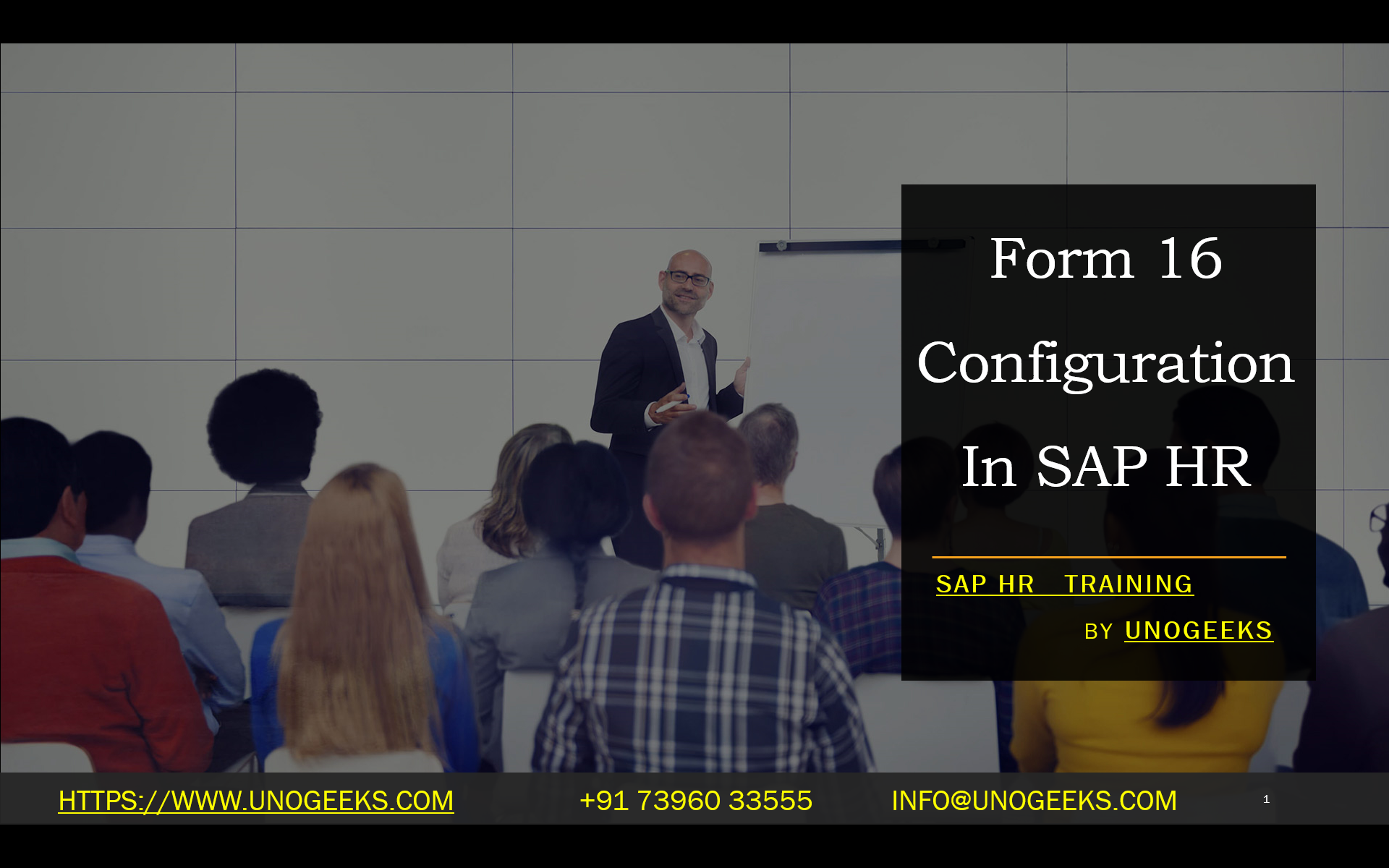Form 16 Configuration In SAP HR
Form 16 Configuration in SAP HR: A Comprehensive Guide
Form 16 is an essential document for income tax filing in India. It’s a certificate issued by employers that provides details of the salary paid and the tax deducted at Source (TDS). Configuring Form 16 correctly within SAP HR ensures that your employees receive accurate statements, facilitating a smooth tax filing process. This blog will cover everything you need about Form 16 configuration.
Understanding Form 16
Form 16 is divided into two parts:
- Part A: Contains details about the employer (TAN, PAN), employee (PAN), salary paid, and TDS. This information is fetched from payroll results.
- Part B: A detailed breakdown of the employee’s gross salary, exemptions, deductions under various sections of the Income Tax Act, and total taxable income.
Steps for SAP HR Form 16 Configuration:
- Maintain Feature 40ECN: This feature retrieves essential employer details (PAN, TAN, etc.) for Form 16.
- Tax Code Configuration: Define tax codes to classify income components and link them to appropriate sections in Form 16.
- Wage Type Configuration: Ensure all wage types that impact Form 16 components (Basic Salary, HRA, Allowances, Perquisites, Deductions, etc.) are correctly configured and linked to relevant tax codes.
- Form 16 Schema and Function Modules: Use the standard SAP schema (IN16) and function modules (HR_IN_F16_EXEC) or customize these based on specific requirements.
- Pre-DME configuration: Configure the Pre-DME (Data Medium Exchange) program to generate files containing tax deduction information for submission to tax authorities as needed.
Important Considerations:
- Off-Cycle Payments: If employees have received off-cycle payments, run an off-cycle payroll activity before generating Form 16 for accurate information.
- Investments (Section 80C, 80D, etc.): Employees must declare their assets to the HR department. Maintain this data in the relevant info types for automatic calculation in Form 16, reducing manual adjustments.
- Change in Employer: If employees change jobs within the financial year, they’ll need Form 16 from both employers.
- Form 12BB: This form captures investment details for accurate computation within Form 16. Make sure employees submit Form 12BB promptly.
Best Practices:
- Consult with a tax expert to ensure compliance with changing tax regulations.
- Maintain accurate employee master data (PAN, address, etc.) to avoid errors.
- Test the configuration thoroughly before generating Form 16 for the entire workforce.
- Train relevant HR staff on Form 16 generation and troubleshooting.
Generating the Form 16 in SAP
Use standard transaction code PC00_M40_F16. Here’s how:
- Enter personnel numbers, payroll area, company code, and the taxation year.
- Run the report.
- Review and release Form 16 for individual employees. Employees can then access or download their forms (details depend on your specific system setup).
Conclusion
Following these steps and best practices, you can streamline Form 16 configuration in SAP HR. This will help you stay Tax compliant and reduce the administrative burden on your HR team.
Conclusion:
Unogeeks is the No.1 IT Training Institute for SAP HR Training. Anyone Disagree? Please drop in a comment
You can check out our other latest blogs on SAP HR here – SAP HR Blogs
You can check out our Best In Class SAP HR Details here – SAP HR Training
Follow & Connect with us:
———————————-
For Training inquiries:
Call/Whatsapp: +91 73960 33555
Mail us at: info@unogeeks.com
Our Website ➜ https://unogeeks.com
Follow us:
Instagram: https://www.instagram.com/unogeeks
Facebook: https://www.facebook.com/UnogeeksSoftwareTrainingInstitute
Twitter: https://twitter.com/unogeeks
